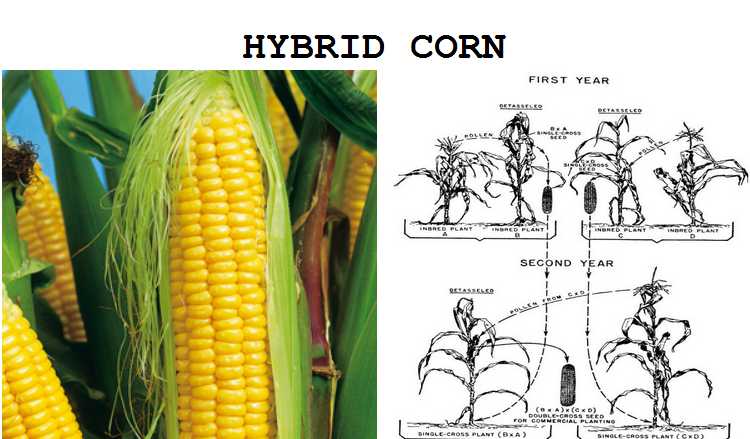328.WHAT IS HYBRID CORN?
Many of us who have never lived on a farm have no idea of the skill and science that go into raising crops today. We might imagine for example, that the farmer simply scatters seeds in the ground and trusts to luck and nature for good results.
The corn crop is quite scientifically controlled today. This control began about fifty years ago when plant scientists discovered a new method of producing different kinds of corn. It was discovered that when the pollen in the tassels of the corn plant was applied by hand to the protected silks on the ear of the same plant, the kernels which were formed produced widely different kinds of corn plants.
Some of the new plants were poor, but others had very desirable qualities. By repeating this process and saving only the best plants for seed, “inbred lines” of corn were established. What was the advantage of these new lines? They might be more resistant to disease and insect pests. They may be able to stand up better in heavy wind storms.
Then it was discovered that when such inbred lines were cross pollinated, the kernels that were formed produced “hybrid” plants of even more desirable qualities. For one thing, the hybrid corn gave a very high yield; it was more productive. It was able to resist disease better and it had even stronger stalks than the corn from which it was bred. In other words, the hybrid corn, which was a combination of the best “inbred” corn, was a very superior type of corn.
Today hybrid corn is being raised all through the corn belts of the United States. Many seed companies and farmers produce hybrid seed for sale. Plant breeders make many new hybrid combinations each year to try to produce even better hybrids than are now grown.
In fact, corn is the leading farm crop in the United States, with about 2,500,000,000 bushels being grown every year. Of course, only a small part of this is hybrid corn. But even the inferior type of corn is used in hundreds of ways in many important industries. Products made from corn range from soap to paper. Scientists are finding new uses for corn every year, and the time may come when corn may be less important as a food than as a basis for wonderful products of every kind.



Leave a Reply